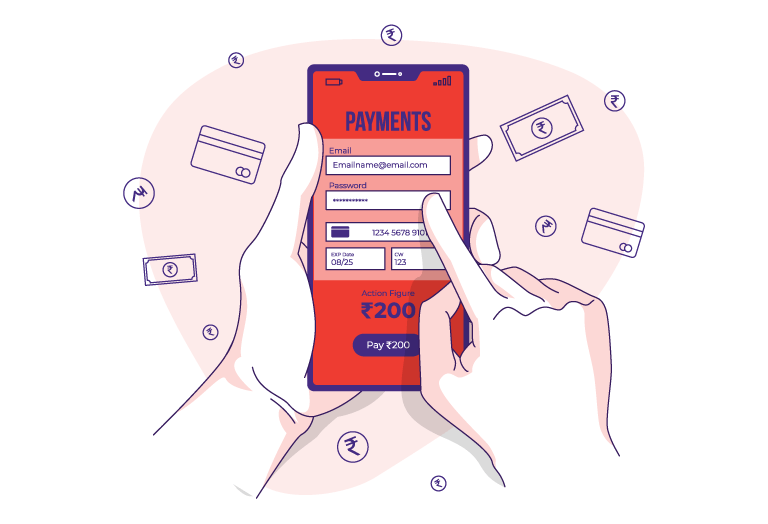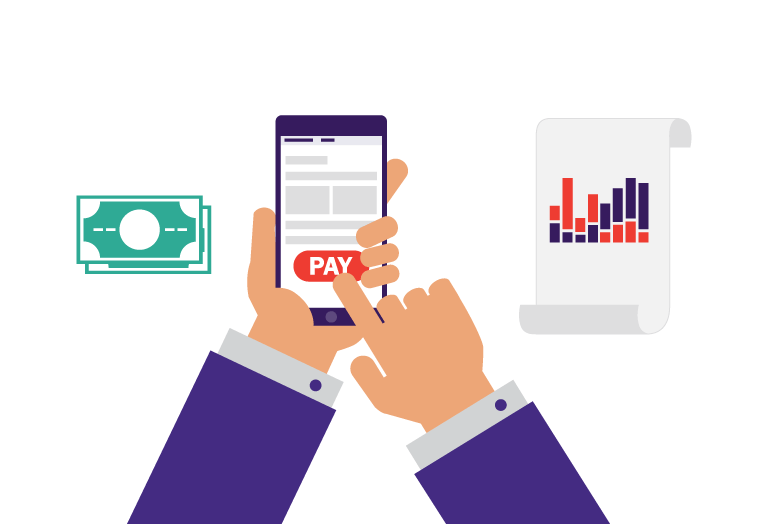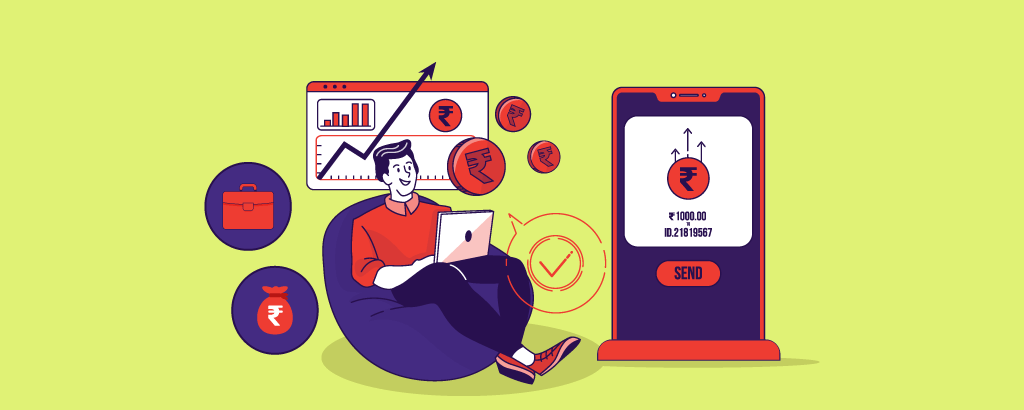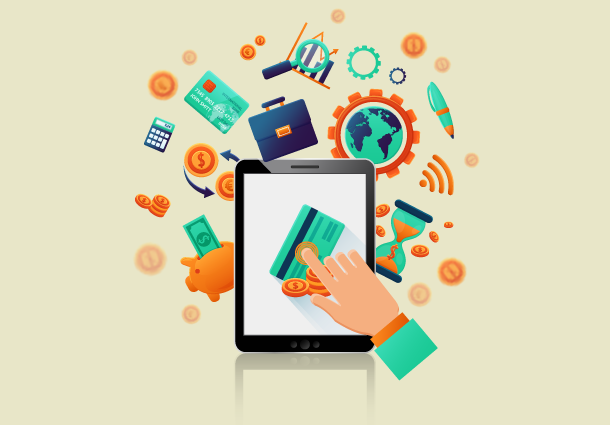Setting a Pathway to the Design Revolution in Banking Sector
Banking organizations are clearly under a tug of war. On one side is the clear bet to become leaders embracing the waves of digitalization and on the other side is the disappearance of physical products including means of payment. This is a test of strength where the incumbent banks are left with no choice but allow the digital revolution to happen to them.
With Automation and AI evolving as the trickiest UX trends taking over every industry, banks do not have the luxury of time to spin the golden yarn out – before losing their customers to the other mega-platform companies. So, what does it take for banks of today to kick their digital side up excelling in the organizational strategies, business model, automation, technology, customer service and work culture together? Let’s break them down into finer points
Customer Experience- The Soul of Digital Banking Revolution
Gone are the days when banks focussed their core processes on themselves. When smartphone and computer screens become the place of transactions it’s important to create value that is aligned to the customers.  Especially, since customers are looking to get away from the brick and mortar banking experience, they expect their digital channels to create a personalized journey from the entrance to the final goodbye. If the banks are able to give their customers the comfort of using banking channels as and when it suits them – that’s a cherry to top the cake.
Especially, since customers are looking to get away from the brick and mortar banking experience, they expect their digital channels to create a personalized journey from the entrance to the final goodbye. If the banks are able to give their customers the comfort of using banking channels as and when it suits them – that’s a cherry to top the cake.
Unless a bank decides to switch to a customer-centric approach, it runs the risk of operation in the future marketplace or ecosystem. But how will the banking industry manage to achieve this? Obviously, there aren’t any shortcuts. Banks can impress their customers by promoting collaboration, critical, thinking, creativity and effective communication. This is done not only to attract new customers into your banking family but also to retain the existing ones. But, here is the loophole.
Bank customers are many but belonging to different age groups, choices and preferences. In that respect, can they come up with a uniform UX design for banking that gets each one covered? Perhaps not. So, banks will need to first figure out an interest that unites its people with shared purposes and then later move on to factors like personalization, security and more. Indeed staying true to the business design revolution online in every possible way will win the customers’ trust to become lifelong partners.
Step 1 – Classify target customers
Millennials
The first and foremost category is the most vibrant and young group of bank users, the Millennials. Why just banking, companies across the world are trying to adjust to the millennial generation- those born between the 1980s to late 90’s -2000. Millennial customers are a real challenge to the banking industry because they turn out to be less brand loyal. They are technology-driven and are always on the lookout for other alternatives at the slightest reason – especially when banks fail to respond to their needs. As far as millennials are concerned, they are extremely comfortable with online services making them a community that focuses on a digital-first branch-second approach in their transactions.
Gen X
Particularly identified as the generation born between 1965 and 1979, Gen X is more interested in socially responsible or impact investments. They are always on the lookout for help from a financial partner because despite being big earners they are also hugely carrying debt. In fact, sources also identify Gen X as the biggest wealth creators for banks. Although tech-friendly, Gen X needs financial guidance to make their life more convenient with tech-driven solutions. So, Gen X UX design for banking should go straight into building more trust, loyalty and advocacy towards this age group in helping them make better financial plans.
Baby Boomers
Baby Boomers are the not so technophobic group of people trying to make sure that they have enough set aside for retirement. Since they are the generation most targeted by fraudsters they seem to doubt digital banking options for their security. Although the digital banking revolution has given Baby Boomers the liberty to check financial data without setting foot inside a physical bank they only prefer UX design for banking with a high level of network security. A digital platform that enables two-factor authentication, includes firewalls, sends out fraud alerts and immediate notifications to prevent unauthorized access.
Step 2 – Track and Personalise Customer Journey
Why are people actively changing banking options with huge tech companies? Undoubtedly its the level of customized interactions that they promise. However, this isn’t restricted to big names, retail banks can also deliver meaningful and powerful personalized experiences by focusing on the customer interactions and using that data to  assume their individual needs, preferences to offer relevant offers and recommendations. In addition to this, banks have an interesting role to play as trusted advisors. When people are at crossroads unable to choose from the number of banking options available, banks need to include next-gen Robo advisors and AI-powered ATM’s and more such exciting ways to engage their customers with a persuasive voice.
assume their individual needs, preferences to offer relevant offers and recommendations. In addition to this, banks have an interesting role to play as trusted advisors. When people are at crossroads unable to choose from the number of banking options available, banks need to include next-gen Robo advisors and AI-powered ATM’s and more such exciting ways to engage their customers with a persuasive voice.
When banks make their customers feel that they are taken care of on an individual level it sparks more loyalty. Banks can resort to digital banking trends like Customer journey mapping to extract insights about their interaction with the online banking platforms. Now, another way to personalize and address a customer’s unique objectives is by empathizing with them.
In other words it’s called Design thinking- considering the human factor while developing products and services. Banking UX strategies that observe what users do, how they think and what they want will truly start identifying their customers’ pain points or an unmet need. For instance, why are consumers not using the mobile banking app? Why don’t they apply to a certain policy? It should delve into the feelings of the consumers. After all, what product works well simply with technology and looks but fails to meet the user’s end?
Step 3- Ensure High Digital Security
Banks are a hub of data belonging to millions of consumers, companies, and government agencies that vary in sizes and importance. No matter what, financial institutions cannot afford to compromise on data security and risk management. Abiding data breaches are a must and at the same time without complicating the users journey. But how can banks develop services for their customers and together safeguard their financial assets?
There are a number of options available out of which the most difficult to fool is biometrics. This solves a double problem- additional security without reducing the speed or ease of use. But when it comes to even more complicated transactions like transferring large sums of money- an additional double code authentication is preferable.
Step 4 – Enhance the omnichannel experience
The best strategy that banks can adopt to cope with the digital banking revolution is to promote an omnichannel experience. To be precise, it is a way by which the unique UX design for banking should allow customers to switch between digital and physical channels without complicating their banking process. Although, only few banks have cracked the mantra of delivering omnichannel experiences studies show that banks perform well when users engage with three or more channels. Again such an immersive user experience digital banking has to do more with design thinking.
Step 5 – Capture the attention of Millennials
It’s no wonder that this group of consumers are going to take the banking industry by horns in the coming years. But Millenials are not in favor of traditional banking systems that dump excessive paperwork and long-winded procedures but are mostly looking for intuitive solutions. Since they are born into the technological world it’s pretty difficult to impress, attract, and retain these young minds with the same technological tools as they easily figure out if something has gone outdated. So, to be on the safer side the digital transformation in banking should be initially aimed at “attracting a younger audience”- the Millennials.
So, with this comes the task of drawing the attention of millennials. Why not try out the following tips:
Involve AI and Data Science
As they represent the “design revolution Millenials” with constant exposure to technology, newer forms of tech innovation like AI and Data Science would only bring them convenience. Such sophisticated strategies will ensure high quality of services and a wider customer base. Even Predictive analysis and voice recognition features will allow banks to compete with others towards a better product development approach. Together these technologies will only focus on easy access to money, better transactions and hassle-free payments making millennials stick around more than usual. Remember millennials are always up for new tech products, less afraid of failures and more focussed to remain in the comfort zone than any other group consumer community.
Go Mobile Friendly
What’s most convenient is less annoying and time-saving. The same goes for services provided on mobile phones. Millennials are ardent lovers of handheld devices and if banks are able to establish a relationship with them at their fingertips, they can win the bet. Most Millennials readily accept that they carry out complex transactions including deposit and withdrawal through mobile apps. Banks can draw in millennial customers by switching to interactive mobile UI’s, online statement reviews, gamification and chatbot features that help Millennial customers acquire any kind of service without having to wait and spend time on long queues.
Encourage Reward Programmes
Millennials are often not reluctant to spend money if they are promised rewards in return. This also throws light on the cash back rewards that are driving the business of fintech players like Paytm, Mobikwik etc. Millennials are easily distracted and carried away by the convenience offered by different platforms. So, it becomes important to keep them focussed towards your brand with some reward concept. Moreover, millennials are experience seekers who love making everything they do memorable. Hence, banks must make their interaction with the branch lively and exciting using gamification techniques. UX design for banking should therefore offer a reason to not get off the couch while addressing the basic needs.
Ending Note
Design is indispensable when it comes to any industry today and banking is no exception. The digital transformation of banking has made it even more challenging for banks around the globe to retain their customers belonging to different age groups. But a UI design that fits the common needs of all its customers has to be thoughtfully carved out so that banks do not fall behind in the competition. Most, importantly banks need to strike right into the heart of Millennials to spark the fire of building long-term relationships with them.
With Pattem Digital, Discover the Perfect Banking Solutions
Are your current banking encounters making you feel unheard and frustrated? Do you find it difficult to offer your consumers streamlined, convenient services on digital platforms? For a hassle-free and enjoyable experience with your financial designs, look no further than Pattem Digital as it is the top-notch user experience design company. Our skilled UX UI design services provide straightforward, sophisticated, and client-focused banking solutions. Adopt a human-centered digital transformation in banking that will transform how customers interact with your company. Contact us right away to discuss how we can transform your banking experience.


